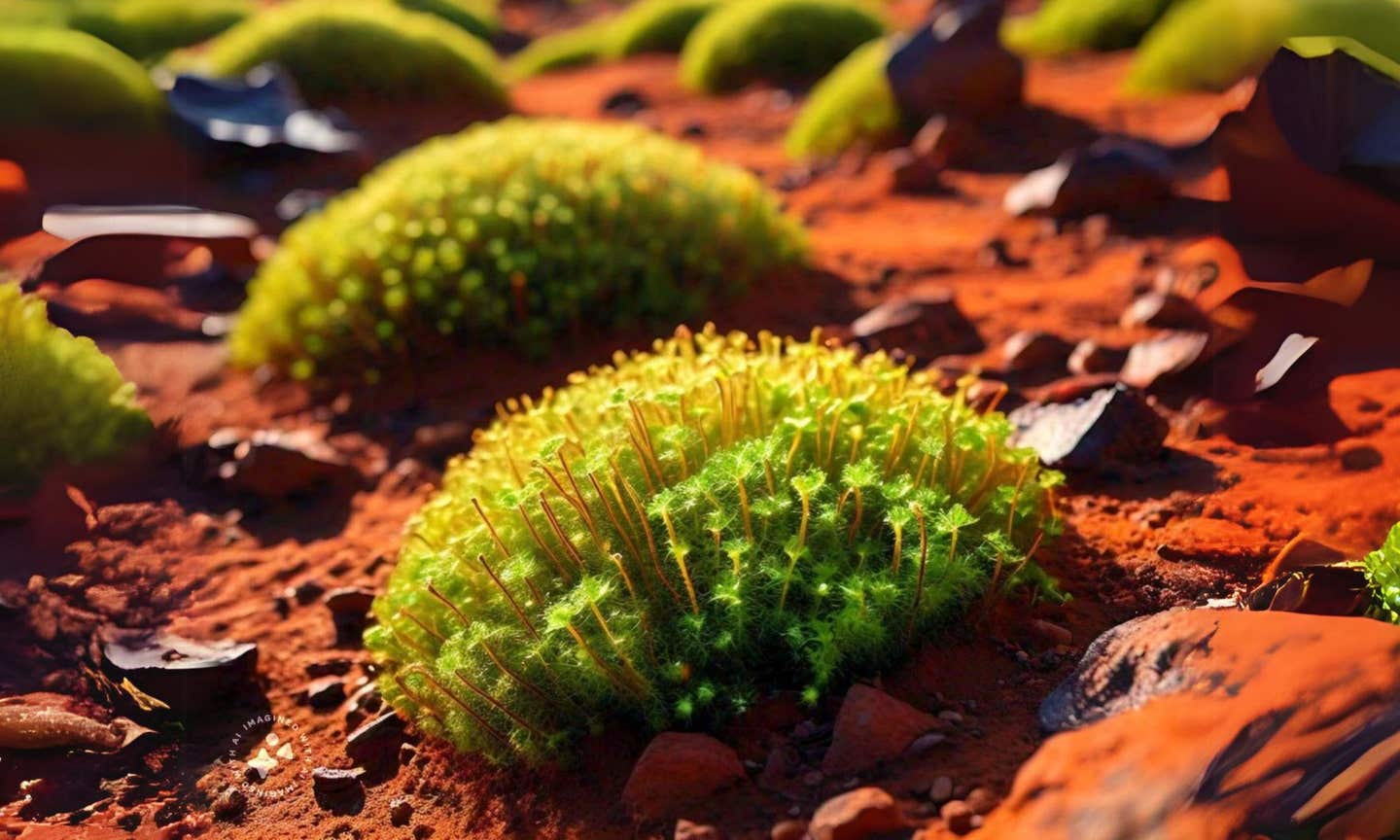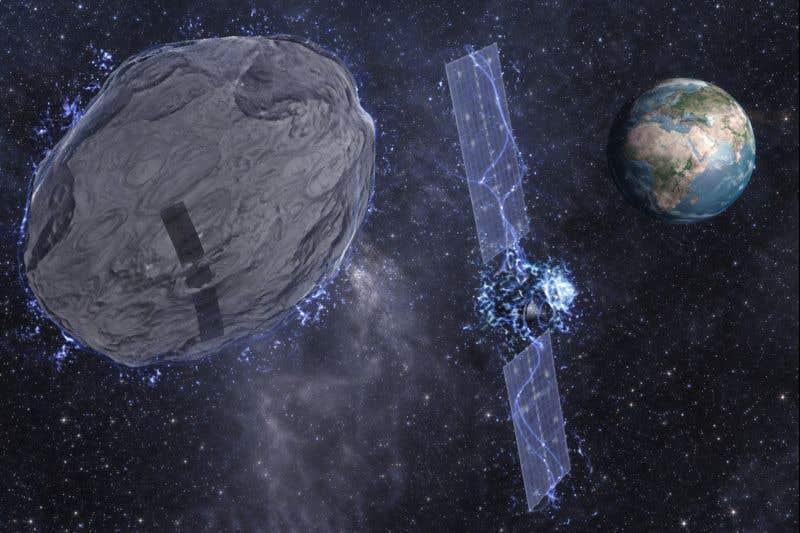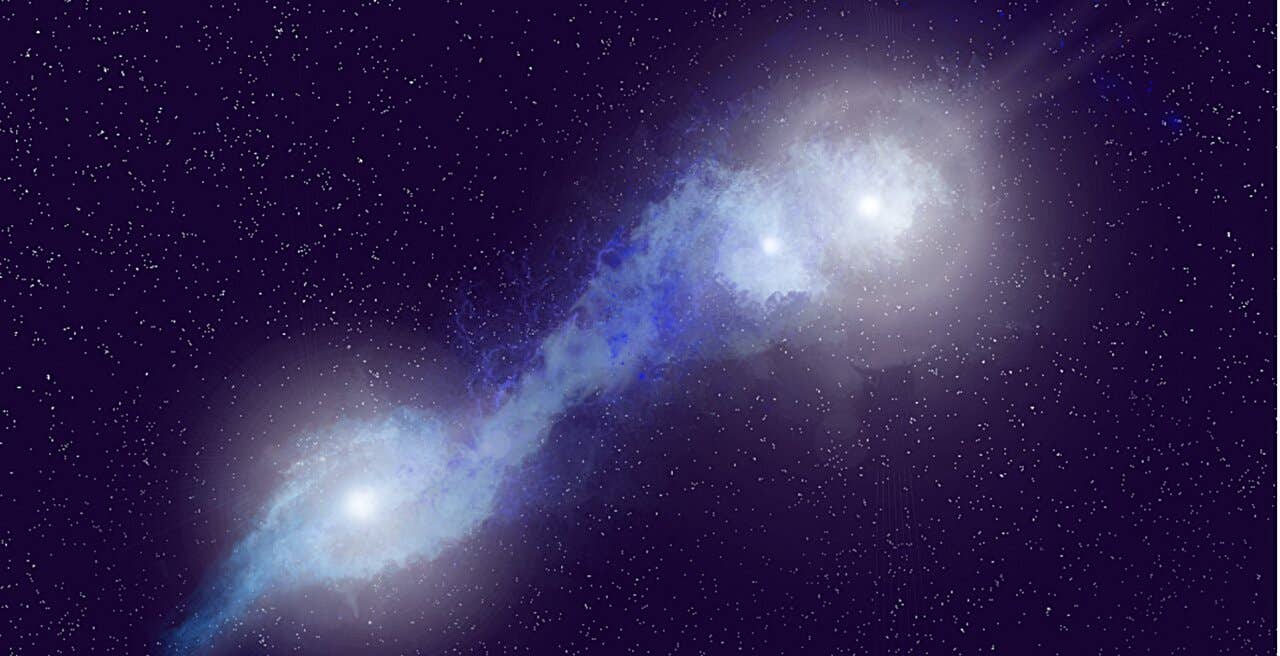Resilient desert moss could transform Mars into a thriving, green environment
Central to this study is Syntrichia caninervis, a type of desert moss known for thriving in some of Earth’s harshest environments.

This research could be a key step in making the Red Planet more hospitable for future human colonization. (CREDIT: CC BY-SA 3.0)
A groundbreaking study from China has revealed the potential of using moss to transform Mars's barren landscape into a thriving, green environment. This research could be a key step in making the Red Planet more hospitable for future human colonization.
Central to this study is Syntrichia caninervis, a type of desert moss known for thriving in some of Earth’s harshest environments. Researchers have identified it as a promising candidate for colonizing extraterrestrial landscapes.
The research, conducted by experts from the Xinjiang Institute of Ecology and Geography, the National Space Science Center, and the Institute of Botany under the Chinese Academy of Sciences, was recently published in the journal The Innovation.
Syntrichia caninervis, often referred to as steppe screw moss, is a globally distributed species that flourishes in extreme environments, including deserts, mountainous regions, and circumpolar areas. It’s a key component of biological soil crusts in these challenging habitats.
To evaluate its potential for Mars, the research team collected samples from the Gurbantunggut Desert in northwest China, home to one of the largest concentrations of this moss. The samples underwent rigorous testing to assess their resilience to extreme desiccation, ultra-low temperatures, intense radiation, and conditions simulating those on Mars.
The findings were remarkable. This moss has an extraordinary ability to tolerate desiccation. Even after losing over 98 percent of its cellular water, it can resume photosynthesis and other physiological activities almost immediately after rehydration.
"We subjected this moss to an air-drying regimen in the lab," explained LI Xiaoshuang, a researcher at the Xinjiang Institute of Ecology and Geography. "The plants appeared green when fully hydrated, turned dark green and then black as they dried, and astonishingly, returned to green just two seconds after rehydration."
Related Stories
This resilience is attributed to the moss’s unique capability of "drying without dying" and "freezing without dying," according to LI. In one of the tests, intact plants were exposed to temperatures as low as minus 80 degrees Celsius in an ultra-low-temperature freezer for five years and to minus 196 degrees Celsius in a liquid nitrogen storage tank for 30 days. Despite these extreme conditions, the moss survived and even regenerated new branches afterward.
In addition to its ability to withstand freezing temperatures, the moss also demonstrated resilience to super-intense gamma radiation levels that would be lethal to most plants. It maintained its vitality even in a simulated Martian environment.
"Using the Planetary Atmospheres Simulation Facility at CAS, we recreated Mars-like conditions," said ZHANG Daoyuan, another researcher involved in the study. "These conditions included an atmosphere with 95 percent carbon dioxide, temperature fluctuations from minus 60 to 20 degrees Celsius, high levels of UV radiation, and low atmospheric pressure."
Mars, often considered the most likely planet for human colonization, currently shows no signs of life. This makes the introduction of Earth organisms a critical part of the process known as terraforming, which aims to create Earth-like conditions on Mars.
"Terraforming will require us to select the right organisms from Earth or engineer new ones capable of thriving in such challenging extraterrestrial conditions," ZHANG explained.
Up until now, most studies on organisms’ ability to withstand outer space or Martian environments have focused on microorganisms, algae, and lichens. This study, however, highlights the robustness of the steppe screw moss, placing it among the toughest organisms on Earth.
"This work provides fundamental insights into the multi-stress tolerance of this moss, paving the way for biologically sustainable human habitats beyond Earth," LI emphasized.
Research into the moss’s capabilities is ongoing. Future studies aim to extend the period of treatment to explore the limits of its stress tolerance further. Scientists are also interested in uncovering the mechanisms that allow the moss to survive such extreme conditions and testing its performance in simulated Martian soil.
Looking ahead, the researchers are planning space flight experiments to expose the moss to actual space conditions. "We eagerly anticipate witnessing what a terraformed Mars might look like," ZHANG added, hinting at the exciting possibilities this research could unlock for humanity’s future in space.
Note: Materials provided above by The Brighter Side of News. Content may be edited for style and length.
Like these kind of feel good stories? Get The Brighter Side of News' newsletter.



